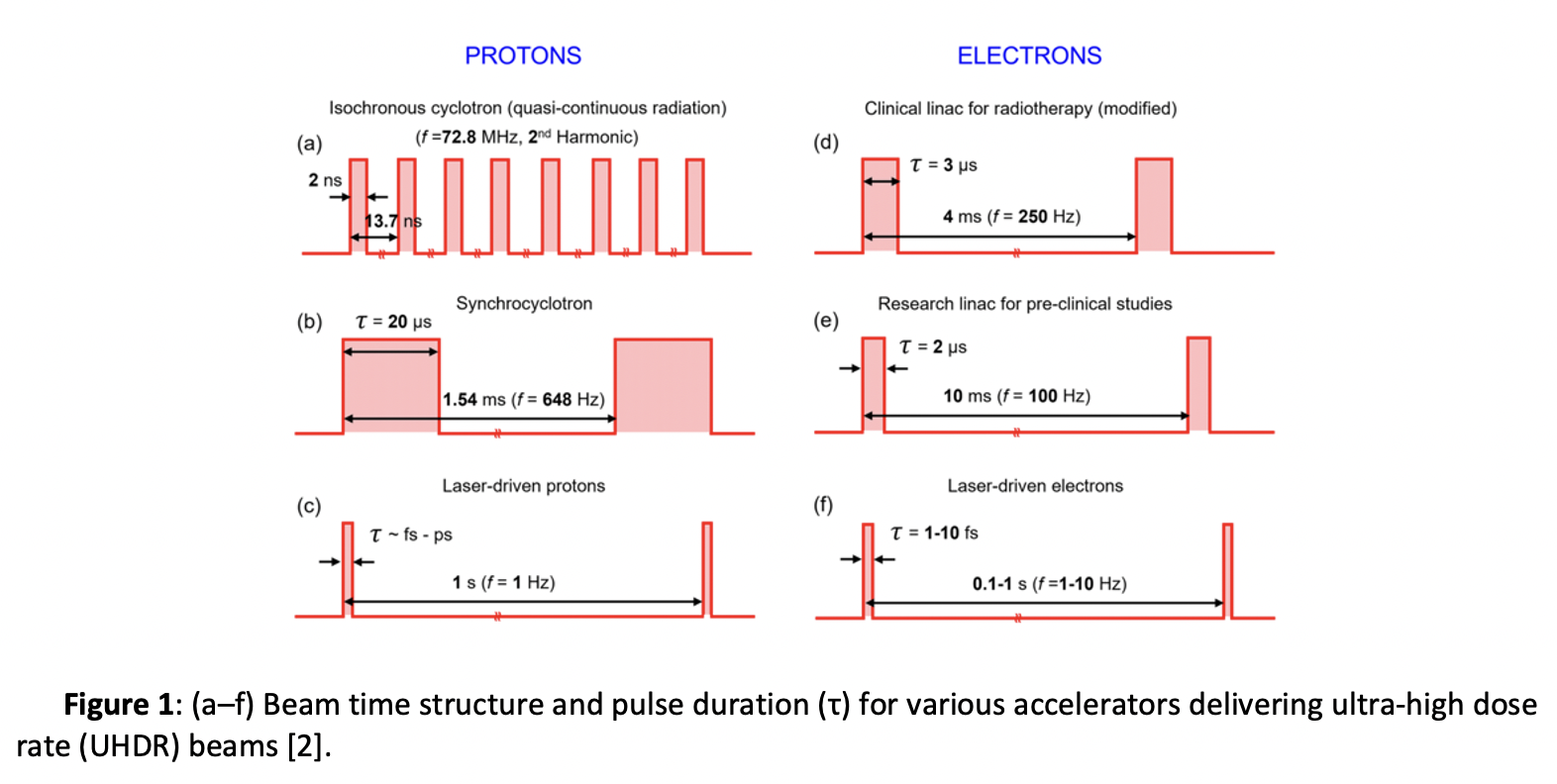Introduction
FLASH radiotherapy (RT) is attracting a significant interest since the first investigations carried out in 2014, demonstrated by the increasing number of related publications [1]. Several preclinical studies world-wide have demonstrated that ultra-high dose rate (UHDR) beams produce an improvement of normal tissue spar-ing while maintaining high tumor control probability compared to conventional dose-rate RT (FLASH effect). How-ever, to fully understand the mechanisms and the biological processes, reliable beam monitoring and dosimetry technologies must be developed, and new protocols are needed [2]. This is crucial to support the first clinical trials and for the clinical translation of FLASH RT. Currently used detectors saturate at these extreme regimes, there-fore the optimization of already established technologies as well as the investigation of novel radiation detection and dosimetry methods are required [3]. The main challenges coming from the peculiar beam parameters characterizing UHDR beams for FLASH RT has stimulated the developments of novel solutions able to address the mentioned issues.
Challenges
Attaining the desired solutions and approaches requires further optimization of already established technologies as well as the investigation of novel radiation detection and dosimetry methods. It is also crucial to fill the gap in terms of validated protocols, assessing new dosimetric procedures and standardized methods. The challenges characterizing dosimetry and beam monitoring for FLASH radiotherapy vary considerably de-pending on the accelerator type and technique used to produce the relevant UHDR radiation environment (Figure 1). Different time structure can be used for the acceleration of the radiation beams and, consequently, the dose and dose-rate per pulse and all these parameters can affect the detector response. An ideal dosimeter for reference dosimetry should be dose, dose rate, energy, and angular independent, with high radiation hardness, linearity, accuracy, and precision. Ionization chambers are recommended by the international protocols for reference dosimetry in RT. However, at very high dose rates their response is heavily affected by the ion recombination and requires major modifications of current commercially available ion chambers and the assessment of novel alter-native dosimetry techniques. Some passive detectors may offer high accuracy and reproducibility, but active detectors provide less time-consuming measurements, although the accuracy and dose-rate independence require further improvements.

Recent developments
Novel approaches have been proposed to try to solve or reduce the issues related to ion recombination on ionization chambers. These imply the design and realization of new concepts of chambers based on ultra-thin geometries or using different gas mixtures. On the other side, alternative solutions are being also proposed, based on the use of portable calorimeters for reference dosimetry and there is an increasing interest towards the assessment of scintillators and semiconductors, such as diamond, silicon and silicon carbide detectors. The mentioned new technologies have been tested with at FLASH regimes and their response was demonstrated to be dose rate independent up to several Gy/pulse.
Recently, also two-dimensional geometries are being investigated, with the purpose of realizing detectors able to measure the spatial dose distributions with one single irradiation, to minimize possible radiation protection issues coming from the conventional scanning approach and the UHDRs. Peculiar geometrical configurations are also relevant for beam monitoring technologies that, beyond being reliable even at UHDRs, must be characterized also by high spatial and temporal resolution.
The development of several novel approaches require an accurate assessment of the related uncertainties and a dedicated effort to identify the most reliable technologies and to standardize the procedures, paving the way for the delivery of new protocols and codes of practice for dosimetry of UHDR beams.
References
1. V. Favaudon et al., Science Translational Medicine, 6(245), 245ra93 (2014).
2. F. Romano et al., Medical Physics, 49:4912-4932. (2022).
3. M. McManus M., SCIENTIFIC REPORTS, vol. 10, ISSN: 2045-2322 (2020).